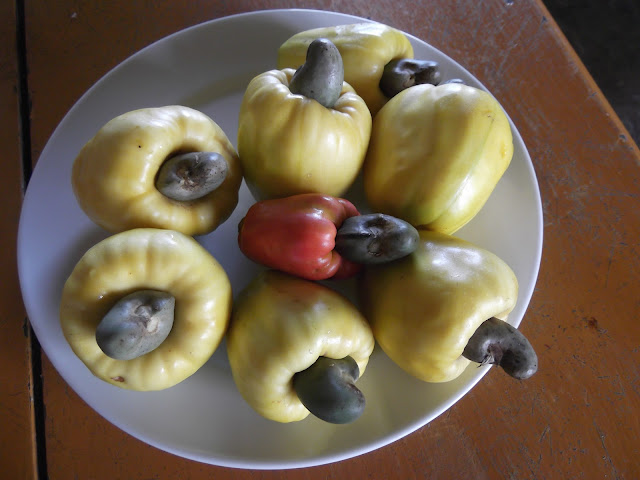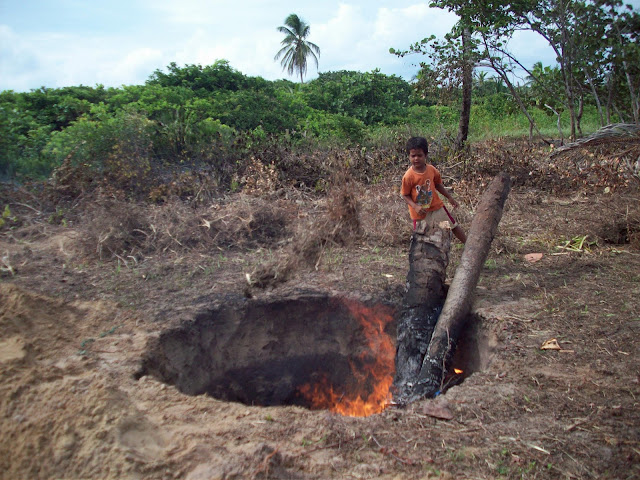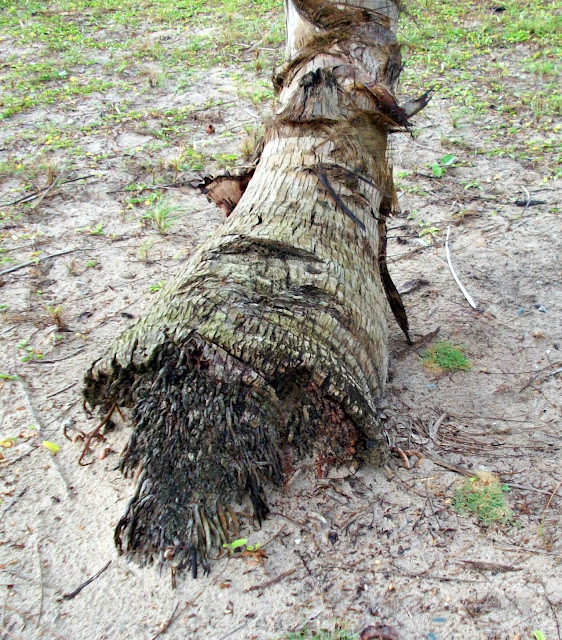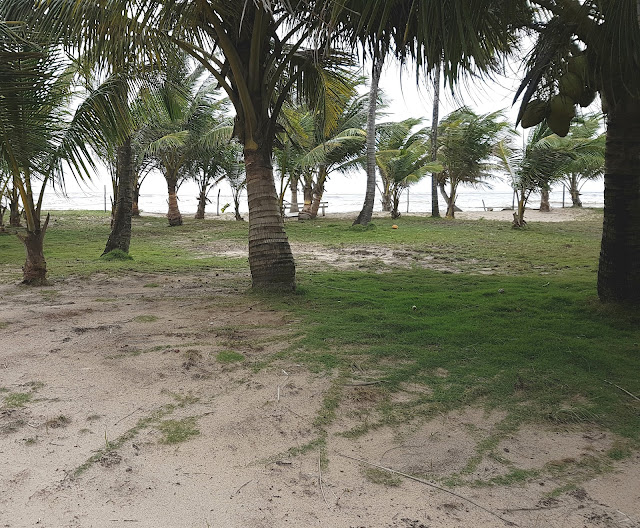A PLAN, RIGHT FROM THE START
A canal for easy and safe access. Clearing brush and planting stuff to replace it. And planting with an end result in mind.
The end result will be some sort of tourism, sharing this incredibly beautiful quiet place with others.
So a large number of the first coconut trees were planted to form a pathway running north and south to our boundaries in those directions. Our east and west boundaries are water...the Caribbean to the east and the lagoon to the north...easy.
Coconut trees are spaced at about 15' apart on both sides of a pathway wide enough to eventually accommodate a golf cart or something of a similar size.
THE FIRST PATHWAY
New

...and the same path a few years later
A NEWER SECTION OF PATHWAY
Between the trees on the west side of the pathway we either have planted, or are planting, something commonly known in the area as a swamp lily. This forms a thick clump pretty quickly but isn't invasive, instead growing pretty much in line with the coconut trees and forming a living and blooming fence. The swamp lily, with huge onion-like tubers, is one of very few ornamental plants that can withstand the really tough Caribbean weather; and it can grow right up to the water's edge. The flower is beautiful... ethereal without being frail; and the things bloom off and on all year long. We use this plant a lot.



















































